Many of the conservation problems Ikes and our fellow sportsmen face today are extremely complex, from climate change to invasive species. These problems can seem so daunting that we don’t know where to start.Here’s a hopeful answer to the question of where to begin: How about our own back yards? Whether it’s on a quarter-acre lot, the proverbial “back forty,” or a larger property a League chapter owns or leases, conservation actions locally can make a difference.
1. Go “Wild”
My wife Elaine and I have designated several sections of our yard as “gone wild.” We let native plants cover these sections. One area is covered with Virginia creeper, a vigorous vine that is native in the East and produces berries that are popular with birds. Blackberry and raspberry vines overtake another section, and second-growth saplings rise up in a third. The result is less mowing (and gasoline consumption) and more wildlife habitat. Every summer, a turkey hen or two visits with her poults to devour the wild fruits, towhees and sparrows nest and forage in the undergrowth these wild areas provide, and hummingbirds regularly visit blooming plants.
2. Plant Heritage Apple Trees
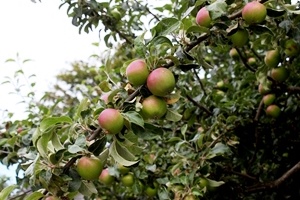 In centuries past, our ancestors planted apple varieties designed to bear fruit from early summer through late fall so that fruit could be canned, dried, and made into cider, pies, and applesauce. Heritage apple tree varieties such as Carolina Red June, Summer Rambo, Grimes Golden, Winesap, and Black Twig ripen over the course of many months in our area.
In centuries past, our ancestors planted apple varieties designed to bear fruit from early summer through late fall so that fruit could be canned, dried, and made into cider, pies, and applesauce. Heritage apple tree varieties such as Carolina Red June, Summer Rambo, Grimes Golden, Winesap, and Black Twig ripen over the course of many months in our area.
We planted many of these varieties on our land, and they have become a source of food for wildlife (and apples for us) over a period of about five months, which is far better than a one-and-done apple monoculture.
3. Create Brush Piles
David Wiedenfeld, a conservation science specialist for the American Bird Conservancy, suggests a simple brush pile to make a back yard or back 40 more hospitable to wildlife. “Create brush piles just from pruning trees and shrubs or gathering limbs,” he says. “If you have trees and shrubs on your place, you have the makings of a brush pile. A lot of bird species like brush piles, especially in the winter, when the brush serves as overhead night cover or places to feed or hide during the day.”
4. Plant Native Trees and Shrubs
Several experts offered the same tip: plant native flora.
“Native flora is always the best choice. They are the trees and shrubs that the native fauna evolved to live with and to use for food and cover,” says Wiedenfeld. “An example of a great small tree or a shrub is a holly, and different species of hollies live across much of the country. Their fruits supply nourishment to many songbirds and their evergreen branches provide great nesting and winter cover.”
Bob Boeren, who retired from the Virginia Department of Forestry and now operates Boeren’s Forestry Consulting Service, suggested planting hardwoods – such as one of the wide variety of oaks that flourish around the country – because they will provide food and cover for wildlife for many decades.
5. Share Your Conservation Philosophy with Neighbors
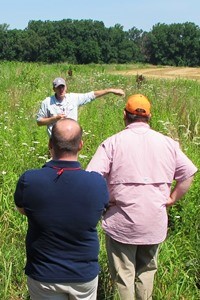 When I decided to have some diseased pines cut down in my yard, I suggested to our adjoining neighbor that he might want his trees harvested as well. His response was an enthusiastic yes, and I was quite pleased with myself – until he told me that he could then transform his former pine grove into a huge fescue backyard.
When I decided to have some diseased pines cut down in my yard, I suggested to our adjoining neighbor that he might want his trees harvested as well. His response was an enthusiastic yes, and I was quite pleased with myself – until he told me that he could then transform his former pine grove into a huge fescue backyard.
I patiently explained that fescue offers very little benefit to songbirds, deer, turkey, and just about every form of wildlife and that perhaps he might want to sow a mix of perennial grasses and clovers. My neighbor said he “liked the look of fescue for its neatness” but promised to do some research.
I was quite pleased (and more than a little surprised) several months later when I observed that the man’s backyard was now largely composed of clover. The gentleman frequently tells me how much he enjoys watching deer and turkey feed there in the evenings. We should never be hesitant to share our conservation tips and Ike philosophy with friends and neighbors.
6. Leave Dead Trees
Mark Garner, a wildlife biologist with the U.S. Forest Service, says that one of the simplest acts you can take to benefit wildlife on any size property is not to cut down a dead tree. “Leaving dead trees standing and scattered across a landscape can provide habitat for many species of wildlife, including birds, bats, squirrels, and snake species,” says Garner. “In some parts of our country, it’s difficult to find dead trees standing because most landowners are managing their property for other purposes.”
However, “once a dead tree becomes available, all kinds of wildlife positively respond to the improved habitat opportunities,” Garner continues. “Dead standing trees attract insects by providing food, and they in turn provide food for wildlife. Besides providing or attracting food, dead standing trees are also used for roosting and denning by many species of wildlife.”
7. Plant a Crab Apple Tree
One of the simplest things we can do to entice birds, butterflies, and other pollinators to our back yard or property is plant a crab apple tree or two. These trees are superlative pollinators for apple trees, and the creatures they draw will end up helping pollinate other wild flora. We use crab apples for jam and pies, but if you prefer not to cook with them, plant the trees in an area where you won’t mind fallen fruit.
8. Plant Warm Season Grasses
Andy Rosenberger, private lands wildlife biologist for the Conservation Management Institute, suggests planting native warm season grasses. “A field of fescue is about as wildlife friendly as asphalt. Why not plant native warm season grasses such as switchgrass, little bluestem, big bluestem, Indian grass, and sideoats grama and allow plants such as ragweed and broomsedge to spring up? Quail and songbirds will appreciate the overhead cover as well as food in the form of seeds. And many species of wildlife will visit to hunt for the high-protein insect life that will be drawn to the grasses.”
9. Do Timber Stand Improvements
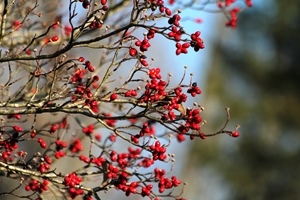 Two years ago, I was walking across our land and noticed a young black oak surrounded by red cedars and Virginia pines. Using my chain saw, I removed the evergreens from around the oak. Then I saw that a nearby dogwood and black gum, both important soft-mast producers, were likewise enveloped. It was a simple manner to “free them up” so that their canopies could expand and the trees could become better berry manufacturers.
Two years ago, I was walking across our land and noticed a young black oak surrounded by red cedars and Virginia pines. Using my chain saw, I removed the evergreens from around the oak. Then I saw that a nearby dogwood and black gum, both important soft-mast producers, were likewise enveloped. It was a simple manner to “free them up” so that their canopies could expand and the trees could become better berry manufacturers.
Whatever the size of your property, chances are that similar situations exist where you can conduct timber stand improvements to free desirable trees from competition and improve food and habitat for wildlife.
10. Do a Mini Clearcut
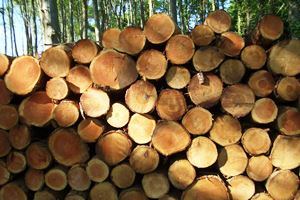 Last year, I noticed that on opposite ends of our 38 acres, two mature pine stands were succumbing to either old age or pine bark beetles. I decided to contract with a logger who removed all of the evergreens over the course of three weeks, leaving clearcuts of two and three acres respectively. While the cuts were being conducted, I began thinking about what to do to replace the pines.
Last year, I noticed that on opposite ends of our 38 acres, two mature pine stands were succumbing to either old age or pine bark beetles. I decided to contract with a logger who removed all of the evergreens over the course of three weeks, leaving clearcuts of two and three acres respectively. While the cuts were being conducted, I began thinking about what to do to replace the pines.
My ultimate decision was to do nothing and let the cuts regenerate on their own. Some folks become outraged at the site of clearcuts. But timber cuts – especially small, irregularly shaped ones – result in vital early successional habitat of grasses, forbs, and shrubs that provide food and cover for wildlife but need disturbance to be maintained. Many songbirds – including golden-winged and blue-winged warblers, brown thrashers, Eastern towhees, field sparrows, indigo buntings, common yellowthroats, yellow-breasted chats, and chestnut, prairie, worm-eating, and mourning warblers, just to name a few – require early successional habitat. Game birds such as grouse, quail, and woodcock also need this type of habitat.
Elaine and I have lived on our land since 1989 and never observed woodcock or bluebirds on our place until the spring after the clearcut. We watched and listened to the woodcocks’ aerial courtship, and a pair of bluebirds raised two broods in a nesting box that previously had been vacant.
11. Seed a Logging Road
Any time I conduct a clearcut, I request that the logger seed the tote road (a road created to get equipment to the clearcut area) with a wildlife mix of clover, millet, and various perennials. When I was discussing my timbering plan with the logger, the two of us designed a road leading from one clearcut to the other, which made it easier for him to remove the logs – and resulted in a superb linear edge-type habitat for wildlife.
Elaine and I regularly observe deer and turkey walking the road, and last summer we even bumped a black bear from the travel way. Songbirds use the road to feed along as well.
12. Create a Mini Food Plot
In 2006, we had a logger cut a section of diseased Virginia pines from our property. I asked forester Bob Boeren for recommendations on what to do next. He suggested creating a quarter-acre food plot and thinning the non-mast-bearing trees from around the ones that could one day bear nuts and berries but had been suppressed within the pine canopy.
I planted the food plot with clover and cut down ashes and red cedars from around white and red oaks and several mulberry trees. I knew the project was a success the morning I arrowed a mature doe that had entered the food plot. The mulberries are already bearing fruit and the young oaks have greatly expanded their crowns because they are receiving more sunlight, which will eventually lead to more acorns on the ground for wildlife. Native blackberries and raspberries have sprung up as well now that more sunlight reaches the forest floor.
13. Do a Timber Thinning
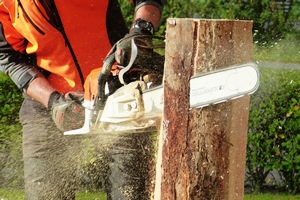 The most salient feature of our 38 acres is a 12-acre hollow consisting mostly of white and red oaks, dogwoods, cherry trees, ashes, poplars, and redbuds. Several years ago, I noted that too few of the trees produced mast or only produced a small amount. So I systematically began removing the mast producers that typically bore few if any fruit or nuts or were deformed, shaded, or stunted in some way. I also cut down the non-mast-producing trees that were crowded in among the mast bearers. (This type of timber thinning is a more expansive form of timber stand improvement.)
The most salient feature of our 38 acres is a 12-acre hollow consisting mostly of white and red oaks, dogwoods, cherry trees, ashes, poplars, and redbuds. Several years ago, I noted that too few of the trees produced mast or only produced a small amount. So I systematically began removing the mast producers that typically bore few if any fruit or nuts or were deformed, shaded, or stunted in some way. I also cut down the non-mast-producing trees that were crowded in among the mast bearers. (This type of timber thinning is a more expansive form of timber stand improvement.)
It’s strange to say that fewer mast-producing trees can mean more mast, but it’s true. Fewer trees means that the surviving ones will be able to receive more sunlight, expand their crowns, and produce more mast.
14. Protect Riparian Zones
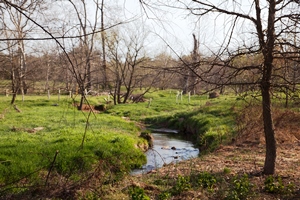 We have one creek and two springs on our property that are part of the Chesapeake Bay watershed. Whenever I have loggers visit the land, I show them where the expansive riparian zone exists and instruct them that it is to remain inviolate.
We have one creek and two springs on our property that are part of the Chesapeake Bay watershed. Whenever I have loggers visit the land, I show them where the expansive riparian zone exists and instruct them that it is to remain inviolate.
It is a simple matter to place similar restrictions on your property or to contact a local fish and wildlife department biologist, USDA Natural Resources Conservation Service office, or other government agency to ask how you can protect, improve, or create a riparian zone to prevent erosion, runoff, and sedimentation.
15. Select Certain Shoots
Another tip that forester Bob Boeren offered came into play when he recently visited me. When he encountered sprouts arising from stumps within the clearcuts, he selected the strongest shoot then, with some hand clippers, dispatched the rest. Acts like this will ensure the plant’s regenerating energy will be funneled into one budding tree instead of many trees and that main tree will grow faster than it would in competition with others.
16. Create Thermal Cover
Wildlife need help coping with extreme temperatures just like we do. In the winter, that means protection from wind, snow, and extreme cold. A “thermal cover” of dense tree canopies can absorb the sun’s rays and act as a sort of space heater, and understory growth provides a break from biting winds. Summer thermal cover provides the opposite benefits: shade from the heat and open space for a cooling breeze. Creating and maintaining thermal covers takes just a bit of planning before planting or thinning trees.
At my house, the logging road between the two major clearcuts took a detour that led to a small linear section of Virginia pines that had been logged. “Why don’t you replace the Virginia pines that once grew in that section with longer lived white pines,” suggested Boeren. “That way you can provide some excellent thermal cover for wildlife.” The benefits extend beyond cover for deer and other mammals. Some songbirds need evergreens to nest in, including the aptly named pine warbler.
So in that little spur road, we planted approximately 125 white pine seedlings this past March. In about five years, they will begin providing important thermal cover for wildlife.
17. Conduct a Controlled Burn
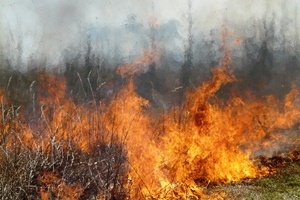 Brian Murphy, CEO of the Quality Deer Management Association (QDMA), lives in a suburban neighborhood outside of Athens, Georgia. He recently conducted a controlled burn on two-thirds of an acre on his property. “I got the permit from the local government, called the fire department, raked a firebreak, and informed my neighbors about the upcoming burn,” says Murphy. “The burn was black and ugly for about a week, but since then some of the most beautiful vegetation you’ve ever seen has sprung up.”
Brian Murphy, CEO of the Quality Deer Management Association (QDMA), lives in a suburban neighborhood outside of Athens, Georgia. He recently conducted a controlled burn on two-thirds of an acre on his property. “I got the permit from the local government, called the fire department, raked a firebreak, and informed my neighbors about the upcoming burn,” says Murphy. “The burn was black and ugly for about a week, but since then some of the most beautiful vegetation you’ve ever seen has sprung up.”
The Minnesota Department of Natural Resources calls fire “nature’s gardener” because it trims back trees and shrubs that shade out grasses, legumes, and other plants. Burned plants turn into fertilizer, and ground warmed by the sun encourages seeds to germinate and grow. This new habitat (and the exposed insects and seeds) benefits quail, turkeys, and songbirds. Other benefits for wildlife, as explained by the North Carolina Cooperative Extension, include shrubs that produce more fleshy fruit and young hardwoods that are more palatable to whitetails.
“Early man knew the benefits of prescribed fire, but today fire scares a lot of people and it shouldn’t,” Murphy says. “A prescribed burn is one of the quickest things that can be done to produce new growth for wildlife, whether you live on a small lot like I do or have a large amount of acreage.”
Note: Seek proper training, permits, and authorization and notify your local fire department when conducting prescribed burns.
18. Plant Native Soft-Mast Bearers
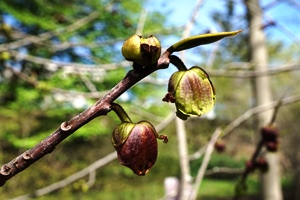 Last spring, I explored ways to enhance our quarter-acre food plot. I planted native paw paws and persimmons around the plot’s border. In conservation terms, this is known as a “feathered edge,” which provides a transition zone for wildlife from the open area of the plot to the oak/hickory forest beyond. So now the area sports three micro-habitats in short order – a great situation for a variety of creatures.
Last spring, I explored ways to enhance our quarter-acre food plot. I planted native paw paws and persimmons around the plot’s border. In conservation terms, this is known as a “feathered edge,” which provides a transition zone for wildlife from the open area of the plot to the oak/hickory forest beyond. So now the area sports three micro-habitats in short order – a great situation for a variety of creatures.
Persimmons and paw paws are two of the most important soft-mast menu items in the southeast, avidly consumed by animals from raccoons to redbirds, and these fruits serve as especially important fall foods when the acorn crop is scarce or fails. Consult a field guide to determine which soft-mast producers are native to your area.
19. Create a Quilt
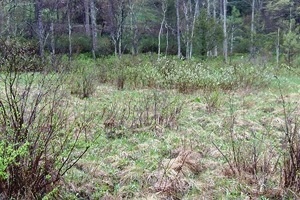 QDMA’s Murphy offers another intriguing suggestion: “Think of ideal habitat as looking like a quilt, where every square is different. It’s not good to have a quilt that’s all the same, just like it’s not good to have a property that’s all trees or all open land. An ideal property should have some mature trees, some young ones, early succession habitat, a native grass section, a water source, and various other ecosystems. The more diversity, the more appealing [it is] to wildlife, from reptiles and amphibians to songbirds and game animals.”
QDMA’s Murphy offers another intriguing suggestion: “Think of ideal habitat as looking like a quilt, where every square is different. It’s not good to have a quilt that’s all the same, just like it’s not good to have a property that’s all trees or all open land. An ideal property should have some mature trees, some young ones, early succession habitat, a native grass section, a water source, and various other ecosystems. The more diversity, the more appealing [it is] to wildlife, from reptiles and amphibians to songbirds and game animals.”
20. Make Hinge Cuts
Hinge cuts, which are when trees are toppled but still remain attached to their trunks and thus alive and producing leaves, are simple to create and have multiple benefits, says wildlife biologist Mark Garner. “Hinge cutting is a great and relatively inexpensive way a hunter can provide improved habitat for multiple species of wildlife, both game and non-game. The habitat improvements would include providing more accessible browse and additional cover for travel and bedding. In addition, if the trees are strategically placed, the hinge-cut trees could funnel game species, such as turkey and deer, to desired locations.”
Whether you have one-third of an acre behind your suburban home, live on a 38-acre parcel like Elaine and I do, or belong to a chapter with a 300-acre spread, these wildlife projects can make a difference. When Elaine and I finish working on a habitat improvement project, we feel good about making a positive difference for wildlife on our property. You can easily experience the same feeling.